The electrification of BMW’s line-up continues unabated, with the new i4 sedan being launched this year, but that doesn’t mean that pure internal combustion and hybrid models are not a big part of the offerings in each of the car lines. That is certainly the case in the iconic 3-Series, as the 330e, in rear- or all-wheel drive versions, continues as the plug-in hybrid model.
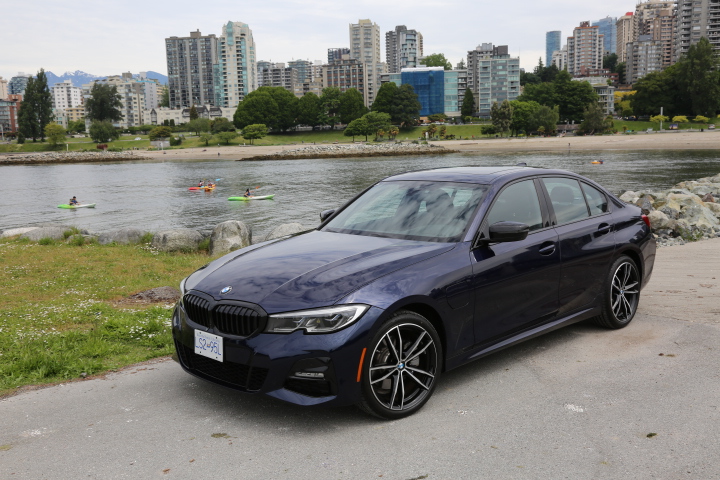
Some observers feel that plug-in hybrids (ICE engine, small battery and limited EV range) are kind of a stop-gap measure until EV battery technology and charging infrastructure allows fossil-fuel convenience. Others feel that it is the ideal combination at the moment, allowing, in the 330e’s case, some 33 kilometres of EV propulsion, before the system reverts to a normal hybrid. That 33 km is towards the low end of ranges, some of which can be twice that and more, and it is mostly a result of the battery size that can be fit into the existing body size, which in this case has to be called nearly a mid-size car.
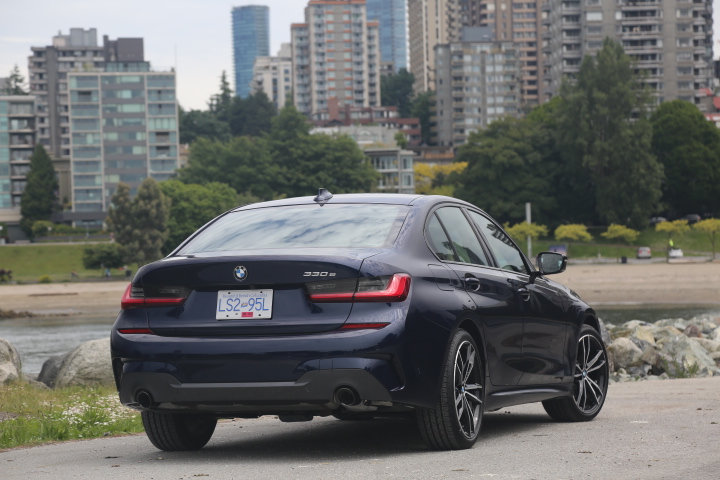
Being a BMW, much is expected of a 3-Series in terms of feel and performance, and the 330e in its basic spec is a noticeable step towards the comfort end of the spectrum. It’s quiet and refined, especially in electric mode obviously, with the brakes, while powerful, showing a bit of the non-linear feel typical of regenerative systems that all hybrids have. The steering, too, feels a little less communicative than what one might expect. In hybrid mode, the 330e delivers 5.5L per 100 km efficiency, a number one would expect in a hybrid vehicle of this size. In pure EV mode, the 330e will do 140 km/h.
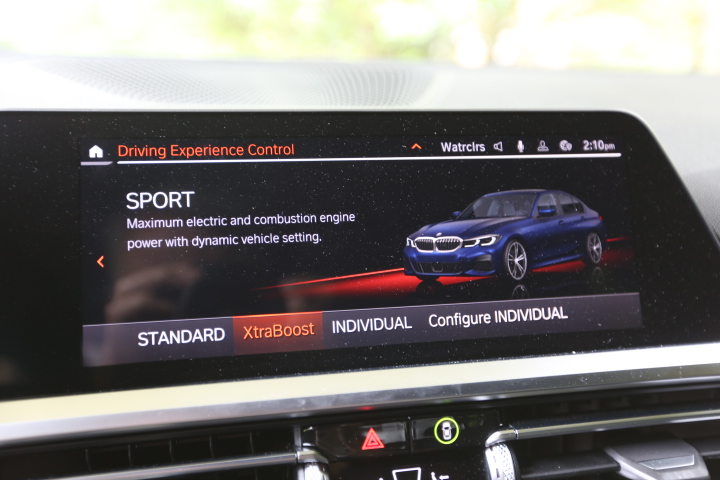
But what about that performance profile that anybody buying a BMW would demand? Will the 330e still appeal to the enthusiast who wants a solid dose of traditional BMW attributes along with all the efficiency of a hybrid? Well, we say that the 330e has the capabilities to be quite entertaining, if not to the level of the company’s M-Cars. Indeed, the most obvious comparison to be made is with the 330i gas-engine model.
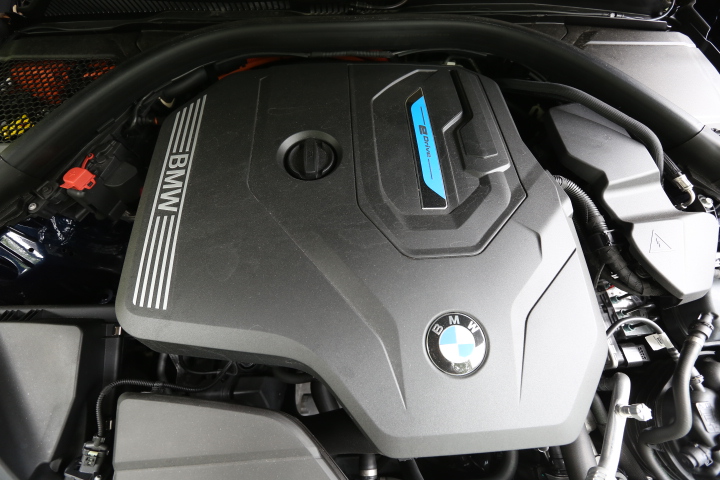
For example, both have the expected 2.0-litre turbo four, which, in the 330e puts out 181 horsepower and 258 lb-ft of torque as low as 1,450 rpm. But, the 330e also gets the electric motor that adds 107 hp and 77 lb-ft as low as 1 rpm, so now we are talking power that allows zero-to-100 km/h of right around 6 seconds. It should be noted that these numbers are available when “XtraBoost” is selected in Sport mode, and I guess the name explains what is causing the additional power for 10 seconds max.
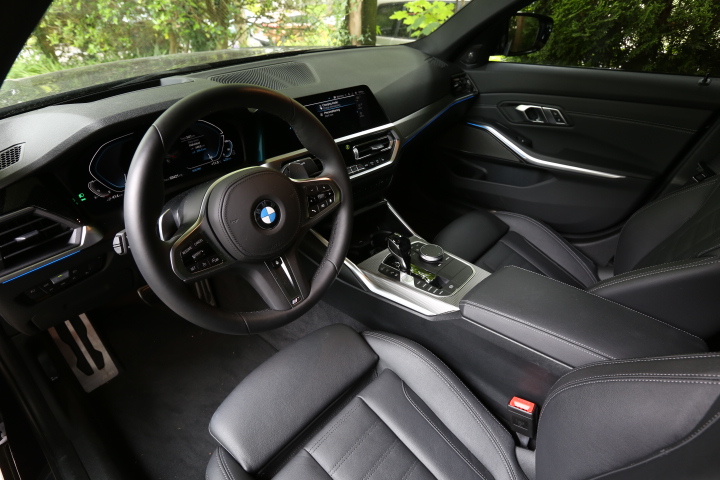
The 8-speed automatic (no manual is offered) is a smooth shifter, and with all that torque available so low in the revs, there is not much more that needs to be asked of it. The power is rear-biased, only sent to the front by the multi-plate clutch in the xDrive when it is needed for traction, which assures more agility and a dynamic feel.
Also contributing to that sporty performance is the optional M Sport package, which should not be passed up on any BMW model that offers it. On the 330e, it costs $2,000, not a lot for what you get. Which is a sport-spec automatic transmission with paddle shifters, leather steering wheel, aero package, 19-inch wheels with 225/40-19 all-season run-flat tires, variable sport steering set-up, fog lights and different trim. Add to this the stand-alone option of Adaptive M Suspension, seemingly a bargain at $600, and you get a seriously entertaining and capable car.
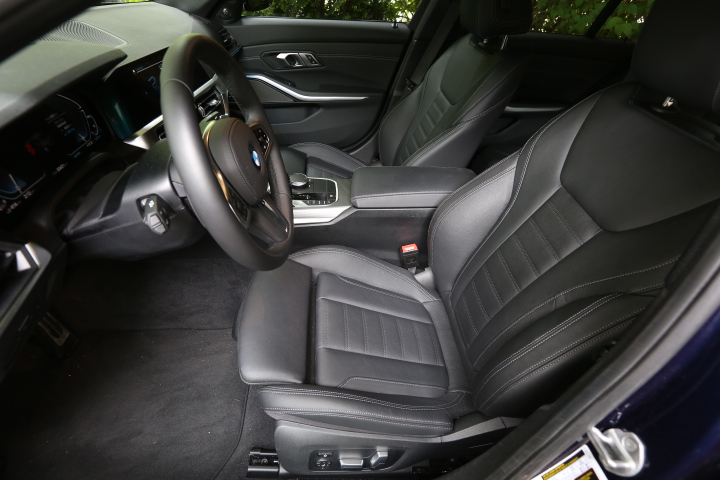
Our tester also had the Premium Enhanced Package for $4,900, and some of it might be considered features (heated steering wheel, lumbar support, automatic trunk) one might expect to find standard on a $54,000 car. It does also have, however, head-up display, wireless charging, and upgraded Harman Kardon audio, features you would want, so it is the option package that most 330e’s will have.
Inside, our tester was all-black, with the optional Vernasca Leather (for $1,500), and so looked quite conservative, an impression also given by the understated design compared to its German rivals. The front seats are ultra-supportive even for a basic-spec seat, with the pull-out under-thigh support especially appreciated. The rear seat is very comfortable for two passengers, not so much for three, and they will be happiest with the front seats not all-the-way to the rear of their travel, or reclined much. The trunk is adequate, but three-quarters the size of that in the 330i, thanks to the batteries located underneath the rear seat, and fuel tank moved from there to reside under the trunk floor.
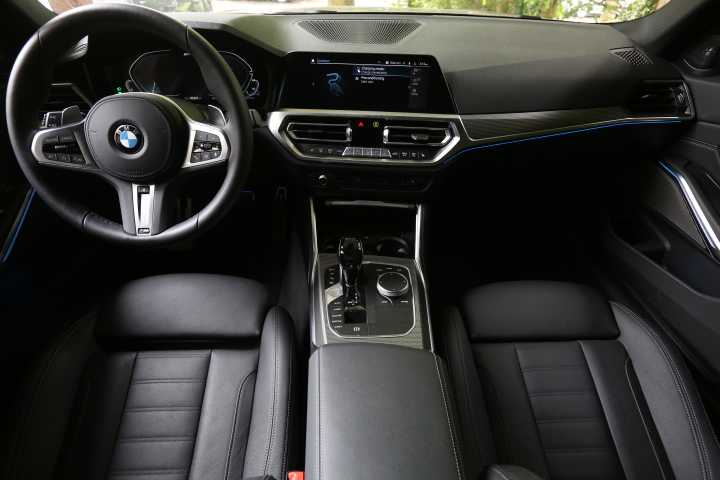
The conservative and tasteful design extends to the exterior, and most notably, the trademark twin-kidney grille is located entirely above the bumper, where it should be.
There is little to identify the 330e as a plug-in hybrid, other than the small ‘e’ after 330 on the trunk lid, and the extra flap on the fender for the plug-in.
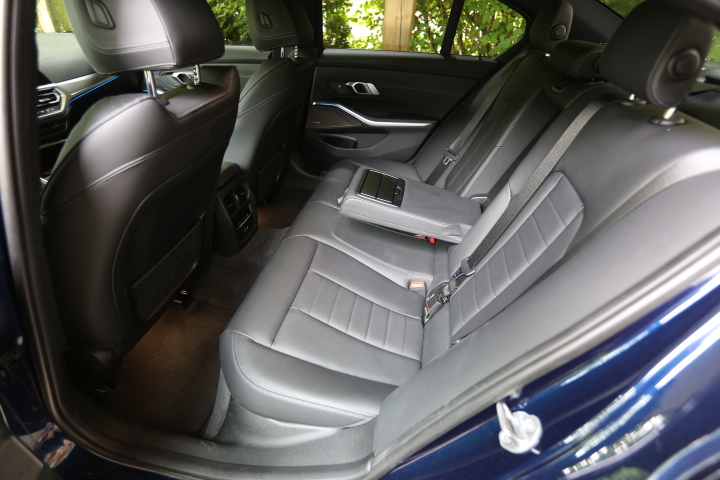
The 330e’s base price, as you might expect, reflects the luxury nameplate, at $54,990. From there, the tariff can rise very close to $70,000, as there are several options packages that include many desirable features.
So, just how will the 330e appeal to BMW buyers, and more importantly, those looking at other PHEV sedans? By its nature, a car with this technology is a bit of a compromise, as it gives the owner a first step into the EV world, but not a lot of range until the gas engine is called into service.
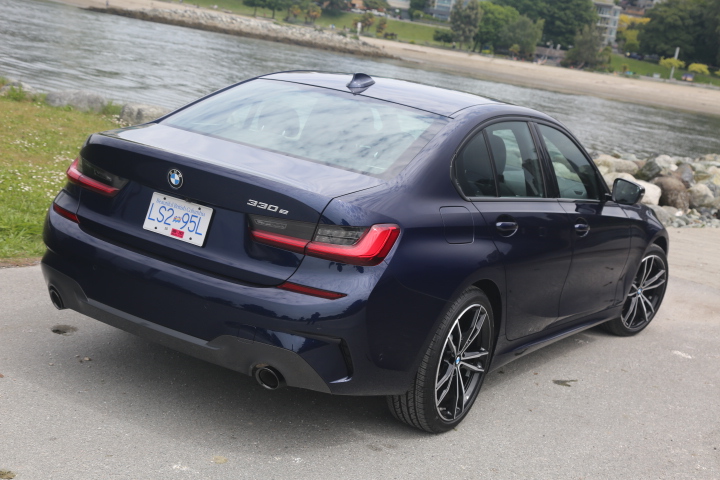
Versus the 330i, there is the smaller trunk to consider, as well as the higher weight (by 166 kg) due to the batteries, but otherwise, the 330e delivers the kind of feel and performance that 3-Series sedans are expected to have, especially if equipped with the M Sport package and adaptive suspension. It’s not quite as athletic as the 330i, but you’d need to drive them back-to-back to feel the small difference.
Specifications:
- Base MSRP: $54,990
- Price as tested: $67,000 approx.
- Type of vehicle: Front-engine, AWD 4-door sedan
- Engine: 2.0L DOHC Turbo I-4
- Power: 184 hp
- Torque: 257 lb-ft @ 1,450-3,600 rpm
- Electric motor: 107 hp
- Transmission: 8-speed automatic
- Brakes: Four-wheel disc with ABS
- Tires: 225/40R19
- Curb weight: 1,877 kg
- Acceleration, 0-100 km/h: 6.0 sec




